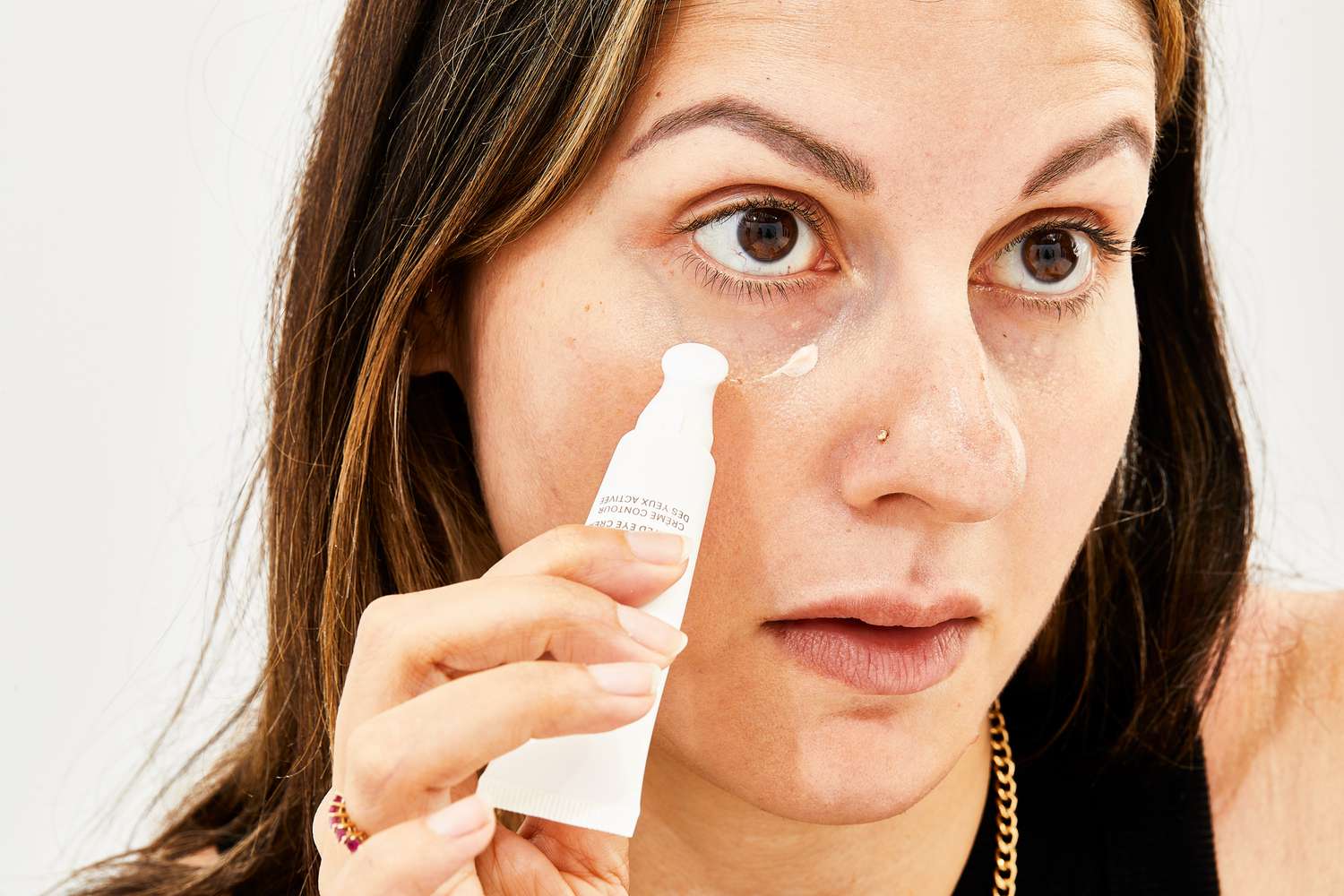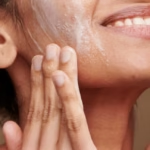Drugstore eye creams have become a staple in skincare routines, offering solutions for a range of under-eye concerns such as puffiness, dark circles, dryness, and fine lines. But the big question remains: do they actually work? According to dermatologists and skincare experts, the answer is yes, but it depends on the formulation, the ingredients, and the specific skin concern you’re targeting.
Here’s a detailed look at how drugstore eye creams can help, what ingredients to look for, and how to use them effectively.
Why Eye Creams Are Different from Regular Moisturizers
The skin around the eyes is the thinnest and most delicate on the body, making it more prone to dehydration, fine lines, and puffiness. Unlike other areas of the face, the under-eye region lacks oil glands, which makes it more vulnerable to dryness. Eye creams are specifically formulated to address these unique needs.
Regular face moisturizers may not be effective in treating under-eye concerns because they are often too heavy or lack the targeted ingredients necessary to address specific problems like dark circles or puffiness. On the other hand, eye creams are designed with lighter textures and ingredients that are safe for the sensitive skin around the eyes.
Key Ingredients in Eye Creams
When selecting a drugstore eye cream, it’s crucial to understand which ingredients target your specific concerns. Here’s a breakdown of some of the most effective ingredients commonly found in eye creams, along with what they do:

1. Vitamin C
- Purpose: Brightens dark circles, evens skin tone, and provides antioxidant protection.
- How It Works: Vitamin C helps to lighten pigmentation and promotes collagen production, which strengthens the skin and improves its elasticity. Over time, it can reduce the appearance of dark circles and even out skin tone.
- Best For: Dark circles and brightening.
- Example Product: Olay Vitamin C + Peptide 24 Eye Cream.
2. Niacinamide (Vitamin B3)
- Purpose: Reduces inflammation, brightens the skin, and improves the skin’s barrier function.
- How It Works: Niacinamide can help reduce the appearance of dark circles, puffiness, and redness. It also enhances the skin’s moisture retention and supports its natural barrier function.
- Best For: Dark circles, puffiness, and overall skin health.
- Example Product: Cerave Eye Repair Cream.
3. Caffeine
- Purpose: Reduces puffiness and constricts blood vessels.
- How It Works: Caffeine is a vasoconstrictor, meaning it helps to tighten blood vessels, which can reduce swelling and puffiness around the eyes. It’s particularly effective in products targeting puffiness and dark circles caused by poor circulation.
- Best For: Puffiness and dark circles.
- Example Product: The Inkey List Caffeine Eye Cream.
4. Peptides
- Purpose: Stimulates collagen production and strengthens the skin.
- How It Works: Peptides are small chains of amino acids that support the skin’s natural repair process. They can help reduce fine lines and wrinkles by promoting collagen and elastin production, improving skin firmness.
- Best For: Fine lines, wrinkles, and skin firmness.
- Example Product: Olay Vitamin C + Peptide 24 Eye Cream.
5. Hyaluronic Acid
- Purpose: Hydrates the skin and smoothens fine lines.
- How It Works: Hyaluronic acid attracts water to the skin, keeping the under-eye area hydrated and plump. It also helps to minimize the appearance of fine lines by adding moisture and smoothness.
- Best For: Dryness, fine lines, and overall hydration.
- Example Product: Neutrogena Hydro Boost Under Eye Cream.
6. Retinol (Vitamin A)
- Purpose: Improves skin texture, reduces fine lines, and boosts collagen production.
- How It Works: Retinol speeds up cell turnover and boosts collagen production, which can help reduce the appearance of fine lines and wrinkles. However, it can make the skin more sensitive to the sun, so it’s best used at night.
- Best For: Fine lines, wrinkles, and anti-aging.
- Example Product: Roc Retinol Line Smoothing Anti-Wrinkle Eye Cream.
7. Shea Butter & Argan Oil
- Purpose: Provides deep moisture and nourishes the skin.
- How It Works: These emollient ingredients are rich in fatty acids, which help hydrate the skin and improve its elasticity. They’re especially helpful for dry and mature skin types that require extra moisture.
- Best For: Dry skin, hydration, and smoothing.
- Example Product: Honest Beauty Calm + Renew Anti-Aging Melting Eye Balm.
How to Choose the Right Drugstore Eye Cream for Your Skin
When shopping for an eye cream, it’s important to consider your skin type and the specific concern you want to address. Here’s a quick guide:
1. For Dark Circles
- Look for eye creams with brightening ingredients like Vitamin C, niacinamide, or peptides. These help lighten dark circles by improving skin tone and boosting collagen production.
- Recommended Product: Olay Vitamin C + Peptide 24 Eye Cream.
2. For Puffiness
- Choose eye creams with caffeine or green tea extract, which help reduce swelling by constricting blood vessels and promoting circulation.
- Recommended Product: The Inkey List Caffeine Eye Cream.
3. For Dry Skin
- Hyaluronic acid, sheer butter, and argan oil are perfect for dry under-eye areas. They offer deep hydration and nourishment.
- Recommended Product: Neutrogena Hydro Boost Under Eye Cream.
4. For Fine Lines and Wrinkles
- Retinol, peptides, and hyaluronic acid are best for promoting collagen production and minimizing the appearance of fine lines.
- Recommended Product: Roc Retinol Line Smoothing Anti-Wrinkle Eye Cream.
How to Use Eye Creams Properly
Applying eye cream correctly is crucial to maximizing its effectiveness. Here’s the best way to apply your eye cream:
- Cleanse Your Skin: Start with a gentle cleanser to remove any makeup and dirt.
- Apply Serum (Optional): If you use a serum, apply it before your eye cream.
- Use a Small Amount: Apply a pea-sized amount of eye cream to your ring finger, which applies the least pressure.
- Gently Tap Around the Eyes: Using light tapping motions, gently apply the cream around the orbital bone (the bone surrounding your eye) and avoid the eyelids unless specified by the product.
- Don’t Tug: Be gentle with the skin and avoid rubbing or tugging.
You can use most eye creams twice a day, once in the morning and once at night, depending on your skincare routine. However, if you’re using products with retinol, it’s best to use them at night and follow with sunscreen during the day, as retinol can increase skin sensitivity to the sun.
Do Drugstore Eye Creams Really Work?
Yes, drugstore eye creams can work, especially if you choose one formulated with the right ingredients for your specific under-eye concerns. While they may not provide the same potency as high-end treatments, many drugstore options are highly effective and offer targeted results like hydrating, depuffing, brightening, and minimizing fine lines.
With the right product and consistent use, you can see improvements in the appearance of your under-eye area, making drugstore eye creams a worthy addition to your skincare routine.
Expert Recommendations:
- For Puffiness: The Inkey List Caffeine Eye Cream ($11)
- For Dark Circles: Olay Vitamin C + Peptide 24 Eye Cream ($25.99)
- For Dry Skin: Neutrogena Hydro Boost Under Eye Cream ($14.99)
- For Fine Lines: Roc Retinol Line Smoothing Anti-Wrinkle Eye Cream ($20.98)
Each of these products targets specific under-eye concerns, proving that effective eye creams are not just for the high-end market but can be found at drugstore prices as well.
Also Read :How to Choose the Perfect Sunscreen for Oily Skin Types



